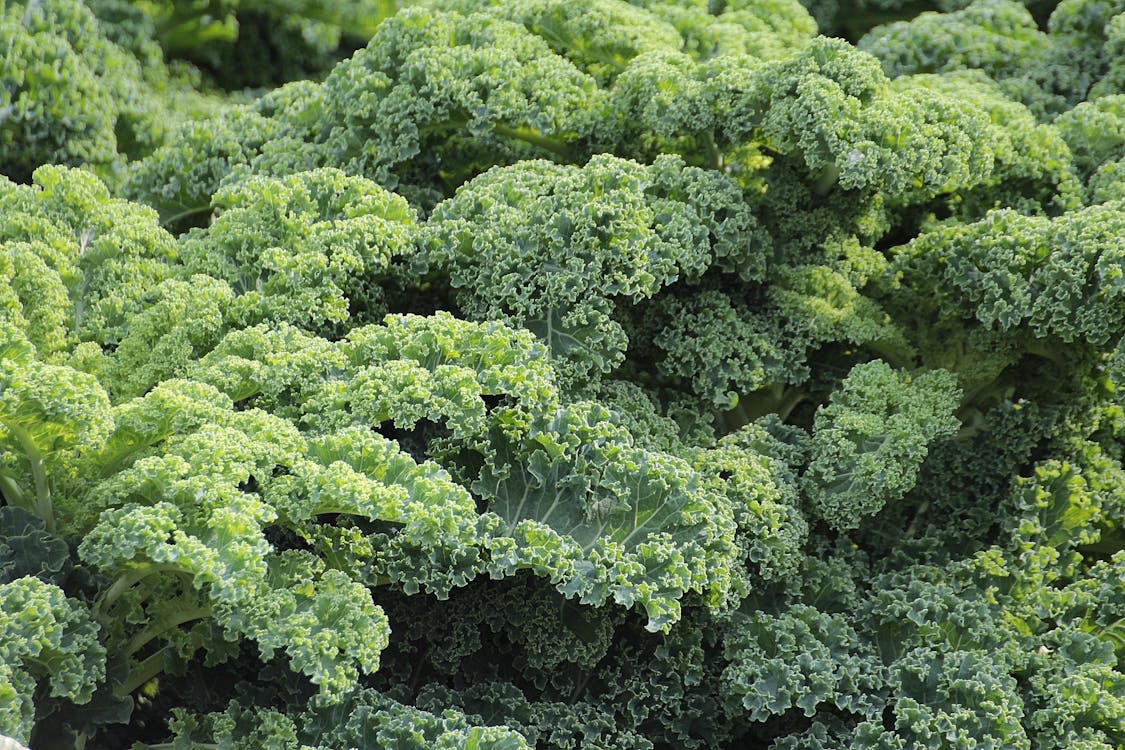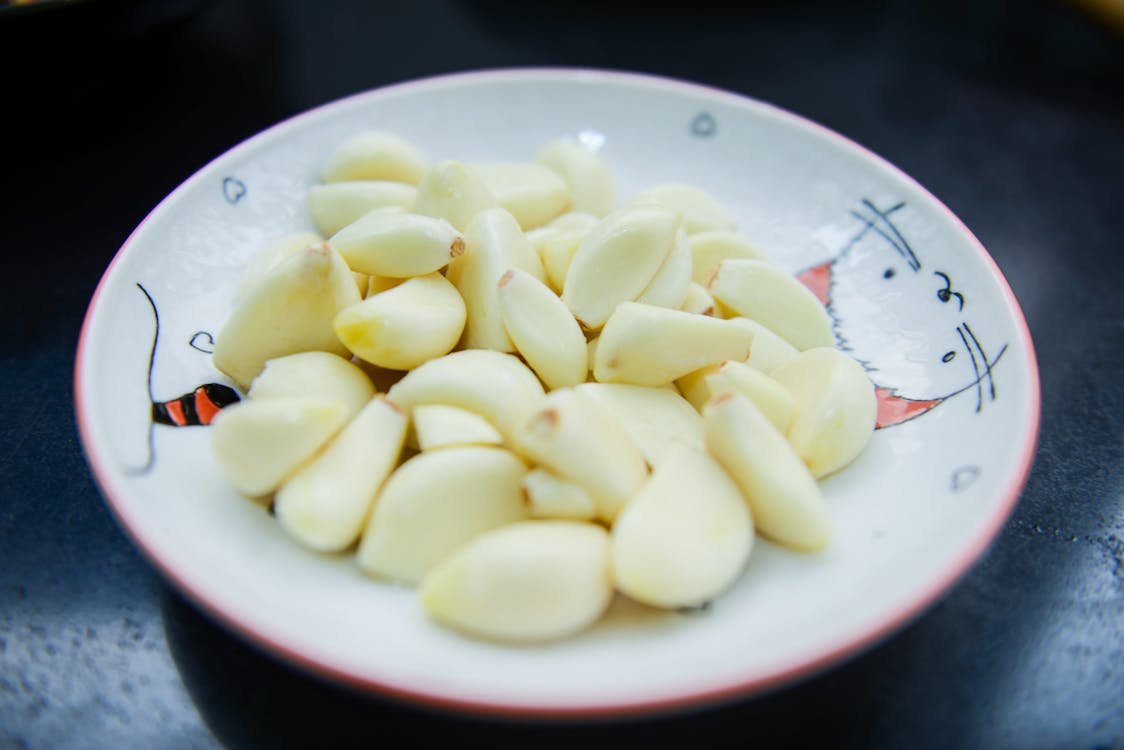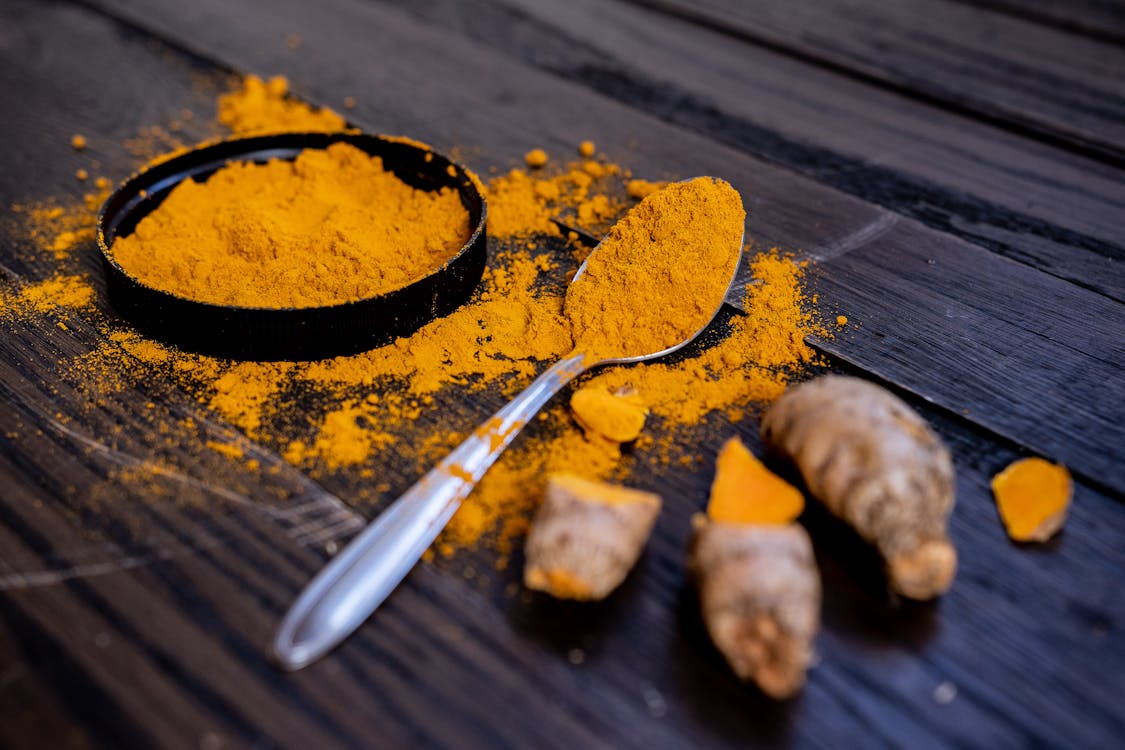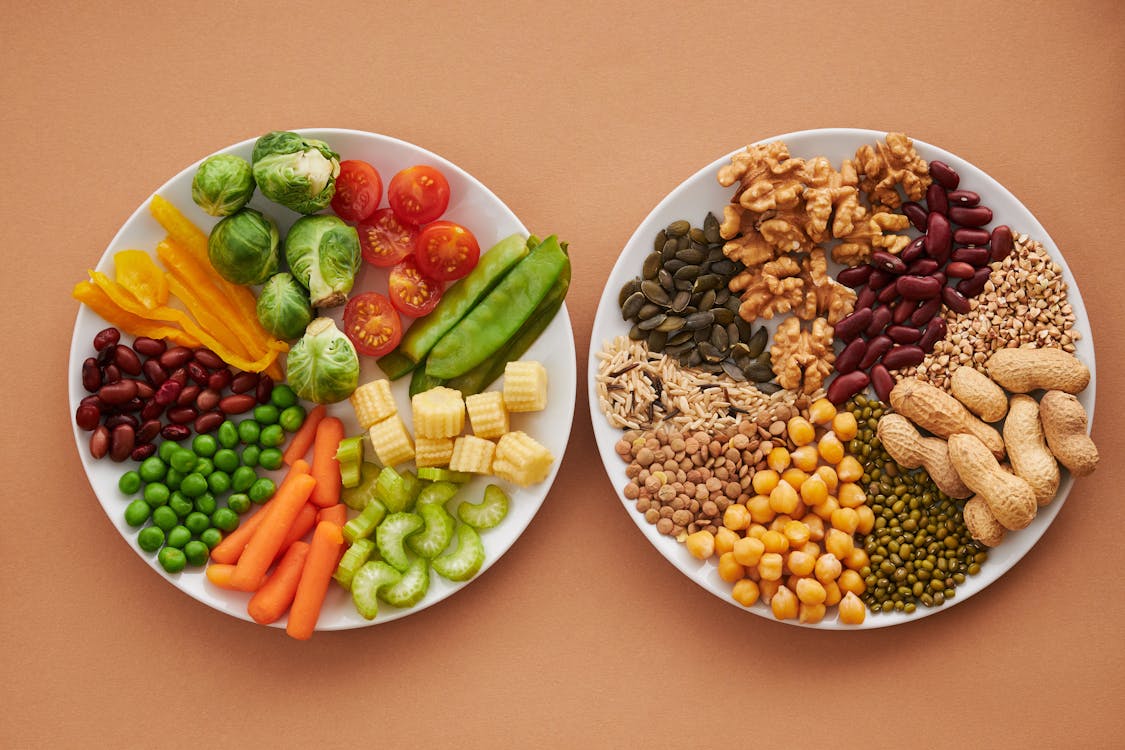
Managing blood sugar levels is crucial for individuals living with diabetes or at risk of developing the condition. Incorporating superfoods that lower blood sugar into your diet can be an effective way to help lower blood sugar and improve overall health. In this article, we’ll explore ten powerful superfoods that are known to have blood sugar-lowering properties. Whether you have diabetes or simply wish to maintain healthy glucose levels, these nutrient-packed foods can be valuable additions to your diet.
- 1- Superfoods That Lower Blood Sugar: Berries
- 2- Superfoods That Lower Blood Sugar: Leafy Greens
- 3- Superfoods That Lower Blood Sugar: Cinnamon
- 4- Superfoods That Lower Blood Sugar: Avocado
- 5- Superfoods That Lower Blood Sugar: Quinoa
- 6- Superfoods That Lower Blood Sugar: Nuts and Seeds
- 7- Superfoods That Lower Blood Sugar: Sweet Potatoes
- 8- Superfoods That Lower Blood Sugar: Garlic
- 9- Superfoods That Lower Blood Sugar: Turmeric
- 10- Superfoods That Lower Blood Sugar: Beans and Legumes
- Conclusion
1- Superfoods That Lower Blood Sugar: Berries

Berries, the delightful and vibrant fruits cherished by many, are more than just a tasty treat. These small but mighty wonders, including blueberries, strawberries, and raspberries, are packed with essential nutrients and have remarkable blood sugar-lowering properties. Let’s delve deeper into how these superfoods that lower blood sugar and contribute to overall health.
Antioxidant Powerhouse
Berries are renowned for their high levels of antioxidants, particularly flavonoids like anthocyanins, quercetin, and ellagic acid. These powerful compounds neutralize harmful free radicals in the body, reducing oxidative stress and inflammation. For individuals managing diabetes, this antioxidant activity can help protect cells from damage caused by fluctuating blood sugar levels.
Fiber-Rich Goodness
Fiber is an essential nutrient that aids in slowing down the digestion and absorption of carbohydrates. By doing so, fiber helps prevent sudden spikes in blood glucose levels after meals. Berries are an excellent source of both soluble and insoluble fiber, making them a valuable addition to a diabetic-friendly diet. The soluble fiber in berries forms a gel-like substance in the digestive tract, which helps regulate blood sugar levels and improve overall glycemic control.
Vitamins and Minerals
In addition to antioxidants and fiber, berries are brimming with essential vitamins and minerals. Vitamin C, found abundantly in strawberries and blueberries, plays a crucial role in supporting the immune system and promoting healthy skin. Meanwhile, raspberries boast an impressive amount of manganese, a mineral that aids in carbohydrate metabolism and insulin production. Including a variety of berries in your diet can ensure you receive a spectrum of these vital nutrients.
Glycemic Impact
One of the most significant advantages of berries for individuals concerned about blood sugar is their low glycemic index (GI). The glycemic index measures how quickly a food raises blood sugar levels compared to pure glucose. Berries have a low GI due to their slower digestion and absorption, making them an ideal choice for maintaining stable blood sugar levels throughout the day.
Heart Health Benefits
Beyond their effects on blood sugar, berries contribute to heart health in numerous ways. The antioxidants in berries help reduce LDL cholesterol levels, also known as “bad” cholesterol, thereby promoting cardiovascular well-being. Additionally, the fiber and potassium content of berries aid in maintaining healthy blood pressure, reducing the risk of heart disease—a common concern for people with diabetes.
Versatile and Delicious
The versatility of berries makes them an easy and enjoyable addition to any diet. You can incorporate berries into your meals in various ways: add them to smoothies, top off your yogurt or oatmeal, mix them into salads, or simply enjoy them as a fresh, tasty snack. With such a wide range of culinary options, it’s effortless to reap the benefits of these superfoods that lower blood sugar.
2- Superfoods That Lower Blood Sugar: Leafy Greens

When it comes to superfoods that support overall health and specifically help lower blood sugar levels, leafy greens take center stage. Varieties like spinach, kale, and collard greens boast a treasure trove of essential nutrients that are not only beneficial for general well-being but can also play a vital role in managing diabetes. Let’s explore the remarkable attributes of leafy greens and how they contribute to improved blood sugar control.
Magnesium-Rich Marvels
Leafy greens are abundant in magnesium, a mineral with a multitude of health benefits, especially for those with diabetes. Magnesium plays a critical role in enhancing insulin sensitivity, which refers to how effectively the body responds to insulin’s actions. By consuming leafy greens regularly, individuals with diabetes can potentially improve their insulin sensitivity, leading to better utilization of glucose in the bloodstream and more stable blood sugar levels.
Low-Calorie, High-Nutrient Profile
Leafy greens are low in calories and high in nutrients, making them a valuable addition to any diet. They are packed with vitamins A, C, K, and folate, along with minerals such as iron and calcium. Incorporating these greens into your meals can help you meet your daily nutrient requirements while keeping your calorie intake in check—a crucial aspect of diabetes management, particularly for those seeking to achieve or maintain a healthy weight.
Fiber for Blood Sugar Control
Fiber is a key nutrient in managing blood sugar levels, and leafy greens provide an excellent source of both soluble and insoluble fiber. Soluble fiber forms a gel-like substance during digestion, which slows down the absorption of sugar into the bloodstream. This leads to more stable blood sugar levels and reduced post-meal spikes. On the other hand, insoluble fiber aids in promoting healthy digestion and can alleviate digestive issues often associated with diabetes.
Antioxidant Armor
Antioxidants found in leafy greens, such as beta-carotene and lutein, protect the body’s cells from oxidative stress caused by free radicals. For individuals with diabetes, the antioxidant properties of leafy greens can be especially beneficial in reducing the risk of complications associated with chronic high blood sugar levels.
Nitrate Boost for Heart Health
Leafy greens are also rich in nitrates, compounds that convert into nitric oxide in the body. Nitric oxide helps dilate blood vessels, promoting improved blood flow and reducing blood pressure. By supporting heart health, leafy greens contribute to an overall healthier cardiovascular system—a significant concern for individuals managing diabetes, who may be at an increased risk of heart-related complications.
Culinary Versatility and Deliciousness
The versatility of leafy greens in the kitchen is unmatched. Whether you prefer them raw in salads, sautéed as a side dish, blended into smoothies, or incorporated into soups and stews, leafy greens can easily fit into any meal plan. Their mild yet satisfying flavors make them an excellent addition to a wide range of dishes, ensuring you can enjoy the health benefits without sacrificing taste.
3- Superfoods That Lower Blood Sugar: Cinnamon

Beyond its delightful aroma and warm flavor, cinnamon stands out as a superfood with impressive blood sugar-lowering properties. This humble spice has garnered much attention in recent years for its potential to aid in blood sugar management and support overall health. Let’s delve into the fascinating science behind cinnamon’s benefits and explore how you can incorporate it into your daily diet to harness its full potential.
The Power of Cinnamaldehyde
Cinnamon owes its unique flavor and medicinal properties to an active compound called cinnamaldehyde. This compound is responsible for the spice’s distinctive aroma and taste, but it also boasts powerful blood sugar-lowering effects. Studies have shown that cinnamaldehyde can enhance insulin sensitivity, enabling the body to utilize insulin more effectively. By doing so, cinnamon helps transport glucose from the bloodstream into cells, where it can be used for energy, resulting in better blood sugar control.
Reducing Insulin Resistance
Insulin resistance is a key factor in the development and progression of type 2 diabetes. It occurs when cells become less responsive to insulin’s signals, leading to elevated blood sugar levels. The bioactive compounds in cinnamon have been found to combat insulin resistance by stimulating insulin receptors and improving their response to insulin molecules. This means that regular consumption of cinnamon may help lower insulin resistance, making it an invaluable tool in diabetes management.
Glycemic Impact
One of the most significant advantages of cinnamon is its low glycemic index. The glycemic index measures how quickly a food raises blood sugar levels compared to pure glucose. Foods with a low glycemic index cause a slower and steadier increase in blood sugar, promoting more stable glucose levels. By sprinkling cinnamon on your meals, you can help mitigate the glycemic impact of high-carbohydrate foods, making it a valuable addition to a diabetic-friendly diet.
Antioxidant and Anti-inflammatory Properties
Cinnamon is a rich source of antioxidants, which play a crucial role in combating oxidative stress and inflammation in the body. For individuals managing diabetes, this is particularly relevant as chronic high blood sugar levels can lead to increased production of free radicals, damaging cells and contributing to complications associated with diabetes. The potent antioxidant properties of cinnamon can help protect cells and tissues, reducing the risk of diabetes-related complications.
Cautions and Considerations
While cinnamon offers many health benefits, it’s essential to exercise moderation in its consumption. Coumarin, a natural compound found in some types of cinnamon (e.g., Cassia cinnamon), can be harmful in large quantities. It’s advisable to choose Ceylon cinnamon, also known as “true” cinnamon, which contains significantly lower levels of coumarin. Additionally, cinnamon supplements should only be taken under the guidance of a healthcare professional, as high doses may interact with certain medications or lead to adverse effects.
4- Superfoods That Lower Blood Sugar: Avocado

In the realm of superfoods that lower blood sugar levels, the mighty avocado reigns supreme. This creamy and versatile fruit is not only a delight to the taste buds but also offers a myriad of health benefits, making it an ideal addition to any diabetic-friendly diet. Let’s dive into the science behind avocado’s blood sugar-lowering prowess and explore how this nutrient-packed fruit can positively impact diabetes management.
Monounsaturated Fat Magic
Avocado is rich in heart-healthy monounsaturated fats, which play a pivotal role in managing blood sugar levels. The presence of monounsaturated fats in the diet has been linked to improved insulin sensitivity, allowing the body to utilize insulin more efficiently. This means that when you consume avocados, your cells become more responsive to insulin, leading to better control over blood sugar fluctuations.
Slowing Carbohydrate Absorption
Carbohydrates are a primary source of glucose in the bloodstream, and how quickly they are absorbed can significantly impact blood sugar levels. The monounsaturated fats found in avocados help slow down the digestion and absorption of carbohydrates, preventing rapid spikes in blood glucose after meals. This process promotes more stable blood sugar levels and provides sustained energy, making it an excellent choice for individuals managing diabetes.
Enhanced Feelings of Fullness
Blood sugar management goes hand in hand with appetite control, and avocados excel in this department. The combination of healthy fats, fiber, and other nutrients in avocados creates a feeling of fullness and satiety after eating. By curbing unhealthy snacking and overeating, avocados can help individuals with diabetes maintain a healthy weight, a crucial aspect of diabetes management to avoid complications and improve overall well-being.
Nutrient-Rich Goodness
Avocados are not only rich in monounsaturated fats but also pack an impressive array of essential nutrients. They are a good source of vitamins C, E, K, and B-complex vitamins, as well as minerals such as potassium and magnesium. These nutrients play crucial roles in maintaining overall health, including supporting heart health, promoting nerve function, and aiding in the metabolism of carbohydrates, all of which are beneficial for individuals with diabetes.
Supporting Heart Health
Heart health is a paramount concern for those managing diabetes, as the condition can increase the risk of cardiovascular complications. Avocado’s monounsaturated fats, potassium, and fiber content all contribute to cardiovascular well-being. These heart-protective properties help maintain healthy blood pressure and cholesterol levels, reducing the risk of heart disease.
5- Superfoods That Lower Blood Sugar: Quinoa

In the realm of superfoods that effectively lower blood sugar levels, quinoa shines as a remarkable grain with a wealth of health benefits. As a nutrient-dense powerhouse, quinoa is celebrated for its low glycemic index, high protein and fiber content, and slow-digesting carbohydrates. Incorporating this ancient grain into your diet can revolutionize your approach to carbohydrates and aid in maintaining stable blood sugar levels. Let’s explore the wonders of quinoa and uncover how it can positively impact diabetes management and overall well-being.
Low Glycemic Index Goodness
The glycemic index (GI) measures how quickly a carbohydrate-containing food raises blood sugar levels compared to pure glucose. Foods with a low glycemic index cause a gradual and steady increase in blood glucose levels, promoting more stable energy levels throughout the day. Quinoa boasts a low GI due to its unique composition of carbohydrates, making it a diabetic-friendly alternative to high-GI grains like rice and pasta.
High Protein Powerhouse
Compared to other grains, quinoa stands out with its impressive protein content. Protein is a vital nutrient for individuals with diabetes, as it helps slow down the digestion of carbohydrates and contributes to feelings of fullness. By incorporating quinoa into your meals, you can achieve a more balanced carbohydrate-to-protein ratio, helping to prevent rapid spikes in blood sugar and supporting appetite control.
Fiber-Rich Marvel
Fiber is a crucial component of a diabetes-friendly diet, and quinoa delivers on this front as well. Fiber aids in slowing down the absorption of sugar in the bloodstream, preventing sudden spikes in blood glucose levels after meals. The fiber in quinoa also supports digestive health, promoting regular bowel movements and alleviating common gastrointestinal issues associated with diabetes.
Sustained Energy Source
The slow-digesting carbohydrates in quinoa provide a steady release of glucose into the bloodstream, leading to sustained energy levels throughout the day. This can be particularly advantageous for individuals with diabetes, as it helps avoid the rollercoaster effect of blood sugar fluctuations that often accompany refined carbohydrates.
Gluten-Free Option
For individuals with celiac disease or gluten sensitivity, quinoa is a fantastic gluten-free alternative to wheat-based grains. This allows those with specific dietary restrictions to enjoy a wholesome source of carbohydrates without compromising on nutritional value or taste.
6- Superfoods That Lower Blood Sugar: Nuts and Seeds

Superfoods have gained immense popularity in recent years due to their exceptional nutritional value and potential health benefits. Among the many superfoods available, nuts and seeds stand out for their ability to help lower blood sugar levels and support overall well-being.
Rich in Healthy Fats:
Nuts and seeds are abundant sources of healthy fats, including monounsaturated and polyunsaturated fats. These heart-healthy fats not only provide a slow and sustained release of energy but also help improve insulin sensitivity. When consumed in moderation, these fats can contribute to stabilizing blood sugar levels and reducing the risk of insulin resistance.
High Fiber Content:
One of the key reasons nuts and seeds are touted for their ability to lower blood sugar is their impressive fiber content. Fiber plays a crucial role in slowing down the absorption of sugar in the bloodstream, preventing rapid spikes in blood glucose levels after a meal. Moreover, fiber promotes a feeling of fullness, reducing overall calorie intake and aiding weight management, which is essential for those with diabetes or prediabetes.
Protein Powerhouse:
Nuts and seeds pack a powerful punch when it comes to protein content. Protein is a vital macronutrient that helps stabilize blood sugar levels by slowing down the absorption of carbohydrates and reducing the impact of high-glycemic foods on blood glucose. Including nuts and seeds in your diet can help manage post-meal blood sugar spikes, making them an excellent option for people with diabetes or those seeking to prevent its onset.
Magnesium and Antioxidants:
These superfoods are also rich in essential minerals like magnesium and antioxidants, which play crucial roles in blood sugar management. Magnesium improves insulin sensitivity and enhances glucose uptake into cells, aiding in maintaining balanced blood sugar levels. Additionally, antioxidants in nuts and seeds help combat oxidative stress, which is associated with chronic diseases, including diabetes.
Diverse Culinary Uses:
The versatility of nuts and seeds makes them easy to incorporate into various dishes and snacks. Whether you enjoy them raw, roasted, or ground, nuts and seeds add a delightful crunch and nutty flavor to your meals. Sprinkle them over salads, blend them into smoothies, add them to oatmeal or yogurt, or simply enjoy a handful as a satisfying snack. With so many options, incorporating these superfoods into your daily diet becomes effortless.
Long-term Health Benefits:
Regular consumption of nuts and seeds is linked to a reduced risk of cardiovascular disease, which is often a concern for individuals with diabetes due to the increased risk of heart-related complications. The beneficial fats, fiber, and antioxidants found in nuts and seeds contribute to heart health, making them a valuable addition to any heart-healthy diet.
Satiety and Weight Management:
Another advantage of nuts and seeds is their ability to promote satiety. Their combination of healthy fats, protein, and fiber keeps you feeling fuller for longer, preventing excessive snacking and aiding in weight management. Maintaining a healthy weight is essential for managing blood sugar levels and reducing the risk of developing diabetes-related complications.
While nuts and seeds offer numerous health benefits, it’s essential to consume them in moderation as they are calorie-dense. Portion control is particularly important for individuals with diabetes, as overeating even healthy foods can affect blood sugar levels. Also, be cautious of salted or flavored nuts that may contain added sugars or excessive sodium, which can undermine their health benefits.
7- Superfoods That Lower Blood Sugar: Sweet Potatoes

Sweet potatoes, often mistaken for their starchy cousin, the regular potato, are a delightful and nutritious superfood that can be a boon for individuals looking to manage their blood sugar levels effectively. These vibrant and naturally sweet tubers are not only delicious but also come with an array of health benefits, making them a valuable addition to any balanced diet. Let’s explore the reasons why sweet potatoes are considered one of the superfoods that can help lower blood sugar levels and promote overall well-being.
Low Glycemic Index:
The glycemic index (GI) is a scale that measures how quickly carbohydrates in foods raise blood sugar levels. Sweet potatoes have a lower glycemic index compared to regular potatoes, which means they cause a more gradual increase in blood glucose levels. This slow and steady release of sugar into the bloodstream helps avoid sudden spikes and crashes in blood sugar, making sweet potatoes a diabetic-friendly food choice.
High in Fiber:
Sweet potatoes are an excellent source of dietary fiber, which is beneficial for helping to lower blood sugar. Fiber slows down the absorption of sugar, resulting in better blood sugar control. It also promotes a feeling of fullness, preventing overeating and aiding in weight management—a crucial aspect of diabetes care.
Abundance of Vitamins:
These root vegetables are rich in essential vitamins like vitamin A, vitamin C, and vitamin B6. Vitamin A is essential for maintaining healthy vision, while vitamin C boosts the immune system and supports skin health. Vitamin B6 plays a role in carbohydrate metabolism and can aid in blood sugar regulation.
Potassium Powerhouse:
Sweet potatoes are a good source of potassium, an essential mineral that plays a crucial role in maintaining healthy blood pressure. By helping to regulate blood pressure, potassium indirectly contributes to overall cardiovascular health, which is vital for individuals with diabetes, as they are at a higher risk of heart-related complications.
Antioxidant-Rich:
The vibrant orange color of sweet potatoes comes from their high content of beta-carotene, a potent antioxidant. Antioxidants help neutralize free radicals in the body, reducing oxidative stress, and inflammation, which are linked to diabetes and other chronic diseases. Including sweet potatoes in your diet can help provide protection against such health risks.
Supports Gut Health:
Sweet potatoes contain a type of fiber called resistant starch, which serves as a prebiotic, promoting the growth of beneficial gut bacteria. A healthy gut microbiome is increasingly recognized as essential for overall health, including metabolism and blood sugar regulation.
Culinary Versatility:
Sweet potatoes are incredibly versatile and can be incorporated into various dishes. They can be baked, roasted, mashed, or even turned into fries. Additionally, they can be used in both savory and sweet dishes, adding a unique flavor and nutritional punch to your meals.
It’s important to note that while sweet potatoes offer numerous health benefits, portion control is crucial, especially for those managing blood sugar levels. The glycemic load of a food depends not only on its glycemic index but also on the portion size consumed. Therefore, it’s essential to balance sweet potato consumption with the rest of your diet and follow a well-rounded meal plan that suits your individual health needs.
8- Superfoods That Lower Blood Sugar: Garlic

Garlic, the pungent and aromatic herb widely used in various cuisines around the world, is not only a culinary delight but also boasts an array of potential health benefits, including its ability to help lower blood sugar levels. For centuries, garlic has been revered for its medicinal properties, and modern research continues to uncover its remarkable effects on health, particularly in relation to diabetes management. Let’s explore the various ways in which garlic can be considered a superfood for blood sugar control and overall well-being.
Insulin Regulation:
One of the primary ways garlic supports blood sugar management is by influencing insulin production and sensitivity. Allicin, a bioactive compound found in garlic, has been shown to stimulate the pancreas to produce more insulin, the hormone responsible for regulating blood sugar levels. This insulin-regulating effect is crucial for individuals with diabetes or insulin resistance, as it helps maintain stable blood glucose levels.
Improved Insulin Sensitivity:
In addition to promoting insulin production, garlic also enhances insulin sensitivity. Insulin sensitivity refers to how efficiently the body’s cells respond to insulin’s actions. By increasing insulin sensitivity, garlic helps the body utilize glucose effectively, reducing the risk of high blood sugar levels and insulin resistance.
Antioxidant Properties:
Garlic is rich in antioxidants, which help neutralize harmful free radicals in the body. Elevated blood sugar levels can lead to oxidative stress, causing damage to cells and tissues. Antioxidants in garlic, such as flavonoids and sulfur compounds, counteract this oxidative damage, reducing inflammation and supporting overall health.
Cardiovascular Benefits:
Diabetes is often associated with an increased risk of cardiovascular diseases. Garlic’s heart-protective properties are doubly beneficial for individuals with diabetes. Regular consumption of garlic has been linked to lower cholesterol levels, reduced blood pressure, and improved blood circulation. These factors contribute to better heart health and a reduced risk of cardiovascular complications.
Anti-Inflammatory Effects:
Chronic inflammation is a common feature in diabetes and plays a role in insulin resistance and the progression of the disease. Garlic’s anti-inflammatory properties help mitigate this inflammation, potentially aiding in the management of diabetes and related complications.
Immune System Support:
A healthy immune system is crucial for overall well-being, and garlic has long been regarded as a natural immune booster. The sulfur compounds in garlic contribute to its immune-enhancing effects, helping the body defend against infections and illnesses, which can be particularly important for individuals with diabetes, as they may be more susceptible to infections.
Culinary Versatility:
One of the best things about garlic is its versatility in the kitchen. It can be used to add flavor to a wide variety of dishes, from savory mains to dressings, sauces, and soups. Incorporating garlic into your meals can be a simple and delicious way to harness its health benefits.
9- Superfoods That Lower Blood Sugar: Turmeric

Turmeric, often referred to as the “golden spice of life,” has been an integral part of traditional medicine for centuries, particularly in Ayurveda and traditional Chinese medicine. This vibrant yellow spice, derived from the Curcuma longa plant, is not only known for its distinctive flavor and color but also for its potential health benefits, including its ability to help lower blood sugar levels. Let’s delve deeper into the remarkable properties of turmeric and its active compound, curcumin, that make it a superfood for blood sugar control and overall wellness.
Curcumin and Insulin Sensitivity:
Curcumin, the main bioactive compound in turmeric, has been the subject of numerous scientific studies due to its potent anti-inflammatory and antioxidant properties. Emerging research suggests that curcumin may also play a role in improving insulin sensitivity, which is essential for effective blood sugar regulation. By enhancing the response of cells to insulin, curcumin may contribute to better glucose uptake, potentially reducing the risk of insulin resistance and hyperglycemia.
Anti-Inflammatory Effects:
Chronic inflammation is increasingly recognized as a contributing factor in the development of various chronic diseases, including diabetes. Turmeric’s powerful anti-inflammatory properties are primarily attributed to curcumin. By reducing inflammation, curcumin may help alleviate insulin resistance and improve overall metabolic health.
Antioxidant Power:
High blood sugar levels can lead to oxidative stress, causing damage to cells and tissues. Curcumin’s potent antioxidant activity helps neutralize free radicals and reduces oxidative damage, protecting cells and supporting overall health.
Cardiovascular Health:
Individuals with diabetes are at a higher risk of cardiovascular complications. Curcumin has been shown to have positive effects on heart health by lowering LDL cholesterol levels, improving endothelial function, and reducing blood pressure. These cardiovascular benefits make turmeric a valuable addition to a diabetes-friendly diet.
Gut Health Support:
A healthy gut microbiome is crucial for overall health, including blood sugar regulation. Curcumin has been found to have prebiotic effects, supporting the growth of beneficial gut bacteria. A balanced gut microbiome is associated with improved metabolism and insulin sensitivity.
Versatility in the Kitchen:
Turmeric can easily be incorporated into various dishes, adding both flavor and color. From curries and stews to soups, smoothies, and even golden milk (turmeric tea with milk and spices), there are numerous delicious ways to enjoy the benefits of turmeric in your daily diet.
Synergistic Benefits:
When combined with other superfoods, such as black pepper, which contains piperine, turmeric’s absorption and bioavailability are enhanced. Piperine can increase the absorption of curcumin by up to 2,000%. Including a pinch of black pepper in dishes containing turmeric can maximize its potential health benefits.
10- Superfoods That Lower Blood Sugar: Beans and Legumes

Beans and legumes, often referred to as the humble powerhouse of nutrition, are a remarkable group of superfoods that offer a myriad of health benefits, including their potential to lower blood sugar levels. Whether you prefer lentils, chickpeas, black beans, kidney beans, or any other variety, these legumes are packed with essential nutrients that make them a valuable addition to a diabetes-friendly diet.
Abundant in Protein:
Beans and legumes are excellent plant-based sources of protein, making them an essential component of vegetarian and vegan diets. Protein plays a significant role in managing blood sugar levels as it slows down the absorption of carbohydrates, leading to a more gradual release of glucose into the bloodstream after meals. Including beans and legumes in your meals can help reduce the impact of high-glycemic foods on blood sugar, promoting better glucose control.
Rich in Dietary Fiber:
One of the standout features of beans and legumes is their impressive fiber content. Fiber is essential for blood sugar management as it slows down the absorption of sugar and helps maintain stable blood glucose levels. Moreover, the soluble fiber found in these superfoods forms a gel-like substance in the digestive tract, which can help lower cholesterol levels, reducing the risk of heart disease—a prevalent concern for individuals with diabetes.
Low Glycemic Index:
Beans and legumes have a low glycemic index, meaning they cause a gradual and steady increase in blood sugar levels, unlike high-glycemic foods that lead to rapid spikes. This low glycemic response is particularly beneficial for individuals with diabetes, as it supports better glycemic control and reduces the risk of sudden fluctuations in blood sugar levels.
Essential Minerals:
Beans and legumes are rich sources of essential minerals, including potassium, magnesium, and iron. Potassium is vital for heart health and helps regulate blood pressure, while magnesium supports insulin sensitivity and glucose uptake into cells. Iron is crucial for energy production and overall well-being.
Promotes Gut Health:
The fiber in beans and legumes not only aids in blood sugar control but also supports gut health. Fiber serves as a prebiotic, providing nourishment to beneficial gut bacteria. A healthy gut microbiome is increasingly recognized as essential for overall health, including metabolism and immune function.
Weight Management:
Due to their protein and fiber content, beans and legumes contribute to a feeling of fullness and satiety. Including these superfoods in your meals can help curb hunger and reduce overall calorie intake, supporting weight management—a crucial aspect of diabetes care.
Culinary Versatility:
The culinary versatility of beans and legumes is unmatched. They can be used in a wide variety of dishes, from salads and soups to stews, curries, and even plant-based burgers. Their unique flavors and textures make them a delightful addition to any meal.
It’s essential to prepare beans and legumes properly to ensure optimal nutrient absorption and minimize digestive discomfort. Soaking, sprouting, or cooking them thoroughly can help reduce the content of anti-nutrients, making these superfoods more easily digestible and improving nutrient availability.
Top 5 Amazon collection of books about blood sugar diet:
Conclusion
Incorporating these ten superfoods into your daily diet can be an effective and delicious way to lower blood sugar levels naturally. Remember that while superfoods play a crucial role in managing diabetes, a balanced diet, regular physical activity, and medication adherence are also vital components of diabetes care. Always consult with your healthcare provider or a registered dietitian before making significant changes to your diet or treatment plan. By taking proactive steps to manage blood sugar, you can lead a healthier and more fulfilling life, free from the worries of diabetes complications.



